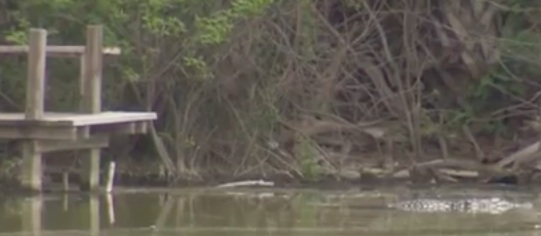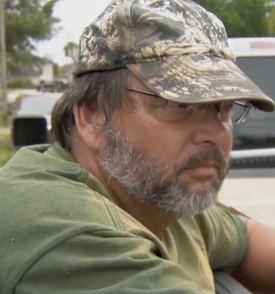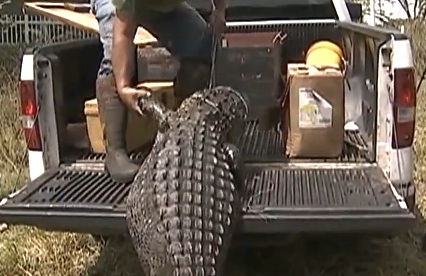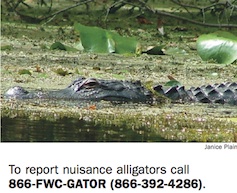 Photos for Headline Surfer® /
Photos for Headline Surfer® /
 PORT ORANGE, Fla. -- The horrific death of a bulldog by an alligator earlier this week in a Port Orange subdivision before it was trapped and killed, led to the predator's stomach being cut open and revealing identifying part of the dog - bones and hair - a grim reminder of what happens when Florida's wildlife habitat and people and their pets collide.
PORT ORANGE, Fla. -- The horrific death of a bulldog by an alligator earlier this week in a Port Orange subdivision before it was trapped and killed, led to the predator's stomach being cut open and revealing identifying part of the dog - bones and hair - a grim reminder of what happens when Florida's wildlife habitat and people and their pets collide.
Losing a pet under these circumstances is devastating. So imagine what it must be like to lose a human.
Nearly 19 years ago, the ultimate horror occurred at Lake Ashby, when ironically a family dog barked as a little boy was being dragged into the pond by a large gator.
The body of the toddler was seen by a hunter being pushed by a gator the next day and the creature was shot three times and killed.
 Adam Trevor Binford, 3, of New Smyrna Beach, shown here at left, was killed an 11-foot gator in Lake Ashby on March 22, 1997, after he and his brother and a dog were playing near the water's edge.
Adam Trevor Binford, 3, of New Smyrna Beach, shown here at left, was killed an 11-foot gator in Lake Ashby on March 22, 1997, after he and his brother and a dog were playing near the water's edge.Here's how it was described in a story written nearly two decades ago as a family's picnic outing turned to sheer terror:
One of the family dogs barked Friday as it waited for 3-year-old Adam Trevor Binford to return from picking flowers in Lake Ashby. But Adam never returned. The last thing his mother and 8-year-old brother saw before he disappeared was a big splash. A hysterical Lorri Ann Binford originally told officials she saw an alligator attack her son, but later said she only saw a big splash "too big for a little boy to make."
The March 22, 1997, account of the New Smyrna Beach toddler's death was written by my then-colleague, Molly Justice, on the front page of the Daytona Beach News-Journal, where we both worked at the time as breaking news reporters.
If irony wasn't enough with Monday's gator victim being a dog and a family dog barking after a toddler had been grabbed by a gator nearly two decades ago, both fatal instances involved the same trapper, licensed by the Florida Fish and Wildlife Commission: Curtis Lucas.
Nearly 20 hours after a mysterious splash in a sea of lily pads, the body of a New Smyrna Beach toddler was found in the grip of an 11-foot, 400- to 450-pound alligator Saturday morning. After combing through the murky waters of the 3,200-acre lake all night, Astor trapper Curtis Lucas ended the search with three gunshots shortly after 8 a.m. The alligator died immediately and quickly was implicated in the death of 3-year-old Adam Trevor Binford.
And in both cases, cutting open the dead gator's stomach revealed remains of its prey.
Lucas told reporters today that the bulldog was missing a back leg when it was found Monday by the edge of a man-made lake in the Skylake neighborhood.
The trapper caught and killed the 9-foot male gator two days later and when he cut open the stomach: "I found bones and hair. We got the right gator."
Residents of a lakefront Kendrew Drive home suspected their dog, which had gone missing a week earlier, was the victim of the gator since killed by the trapper, after it was captured in a former quarry, filled with water.
Tips in terms of co-existing with alligators in the Sunshine State:
 • Never feed alligators – it’s dangerous and illegal. When fed, alligators can overcome their natural wariness and learn to associate people with food. When this happens, some of these alligators have to be removed and killed.
• Never feed alligators – it’s dangerous and illegal. When fed, alligators can overcome their natural wariness and learn to associate people with food. When this happens, some of these alligators have to be removed and killed.
 FAST FACTS:
FAST FACTS: